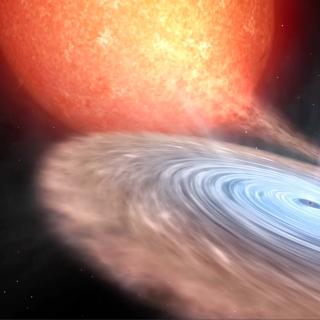Bibcode
Mata Sánchez, D.; Muñoz-Darias, T.; Armas Padilla, M.; Casares, J.; Torres, M. A. P.
Bibliographical reference
Astronomy and Astrophysics
Advertised on:
2
2024
Journal
Citations
22
Refereed citations
15
Description
We present 20 epochs of optical spectroscopy obtained with the GTC-10.4m telescope across the bright discovery outburst of the black hole candidate Swift J1727.8−162. The spectra cover the main accretion states and are characterised by the presence of hydrogen and helium emission lines, commonly observed in these objects. They show complex profiles, including double peaks, but also blue-shifted absorptions (with blue-edge velocities of 1150 km s−1), broad emission wings, and flat-top profiles, which are the usual signatures of accretion disc winds. Moreover, red-shifted absorptions accompanied by blue emission excesses suggest the presence of inflows in at least two epochs, although a disc origin cannot be ruled out. Using pre-outburst imaging from Pan-STARRS, we identify a candidate quiescent optical counterpart with a magnitude of g ∼ 20.8. This implies an outburst optical amplitude of ΔV ∼ 7.7, supporting an estimated orbital period of ∼7.6 h, which favours an early K-type companion star. Employing various empirical methods, we derive a distance to the source of d = 2.7 ± 0.3 kpc, corresponding to a Galactic plane elevation of z = 0.48 ± 0.05 kpc. Based on these findings, we propose that Swift J1727.8−162 is a nearby black hole X-ray transient that exhibited complex signatures of optical inflows and outflows throughout its discovery outburst.
Related projects

Black holes, neutron stars, white dwarfs and their local environment
Accreting black-holes and neutron stars in X-ray binaries provide an ideal laboratory for exploring the physics of compact objects, yielding not only confirmation of the existence of stellar mass black holes via dynamical mass measurements, but also the best opportunity for probing high-gravity environments and the physics of accretion; the most
Montserrat
Armas Padilla